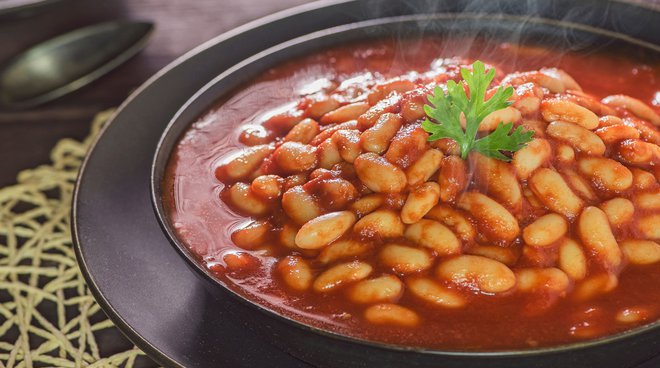Pulp, Passata and Related Products
TOMATO PASTE: HOW TO USE IT IN THE KITCHEN
With its vibrant red color, tomato paste is an extract of sweet yet intense flavor, but at the same time it's dense, creamy and useful in so many recipes.
Let's find out how to use it in the kitchen!

Pomì tomato paste
Pomì tomato paste is prepared by simply pressing tomatoes. The extracted juice is then evaporated at a low temperature (60°-75°) inside large "vacuum evaporators" to reduce the water content, resulting in a product characterized by a dense consistency, intense color and a decisive flavor: Pomì tomato paste.
Colorful, but without colorants!
The high concentration of tomato is a result of the process used to make the product, which involves juice reduction and creates a perfectly intense flavor and color. The bright red color of the paste is created by the process used to prepare the product, which maintains and intensifies all the special qualities of tomato, including its color, without adding any colorants.
Store in the pantry, no preservatives required!
Pomì Tomato paste is packaged in aluminum or glass.
The tube of paste is one of the most historic packaging formats for tomato preserves. Today, aluminum is still practical for conserving paste in the pantry. Thanks to its properties, it maintains the characteristics of simple and natural paste for a long time, without the need to add any preservatives. The same goes for glass, which is excellent for maintaining the balanced acidity of this product for a long time, while showcasing its original intense red color.
A traditional classic
As children, we undoubtedly spotted it countless times in our grandmother's kitchen: that unforgettable tube of tomato paste.
After all, tomato paste is ideal for use in traditional recipes and those requiring lengthy cooking times, like meat sauce.
Together with purée, all you need is a teaspoon of tomato paste, with its creamy and dense consistency, to add a touch of intensity and complexity to the most classic dishes of Italian cuisine.
Tomato paste is also the perfect ingredient for enriching other dishes requiring lengthy cooking times, like soups, minestroni, but also stews and casseroles. Just a small amount of paste adds a decisive tomato flavor to recipes, balancing acidity without adding other liquids.
A surprisingly modern ingredient
Apart from adding the perfect touch to traditional recipes, tomato paste is an extremely practical ingredient, ideal for anyone looking to cook faster and smarter.
Tomato paste can be used to enrich hot condiments, like béchamel sauce, or cold sauces: add some to ketchup, along with a dash of chili pepper, to create a spicy sauce.
Add the tip of a teaspoon for a zesty twist to the barbecue sauce which completes this potato recipe.
Add aromatic herbs to turn it into the base of a vibrant marinade which can be used for baked fish or for creating a touch of flavor for pan-fried meats.
Lastly, lovers of decisive flavors can spread some raw tomato paste onto a piece of hot toast, with a drizzle of olive oil. A unique delicacy you simply must try!
NEWS
ALSO IN FOOD TRENDS
Pulp, Passata and Related Products
Vegetarian cooking: Middle Eastern recipes with tomato sauce
Vegetarian cuisine has deep roots in many cultures, and Middle Eastern cuisine is by no means an exception.
Pulp, Passata and Related Products
How to prepare real Italian spaghetti with Pomì ingredients
How can you prepare Italian spaghetti? This delicious first course is to all intents and purposes one of the most famous icons of Mediterranean cuisine.
Pulp, Passata and Related Products
Italian taste meets the Middle East: recipes with Italian tomatoes
When the vibrant flavours of the Middle East merge with Italian tomatoes and the culinary tradition of Italy, dishes are born that are nothing less than an ode to the harmony of tastes.


